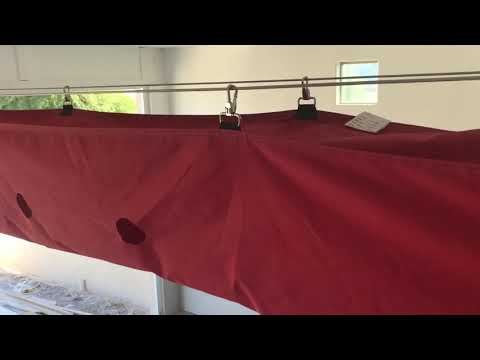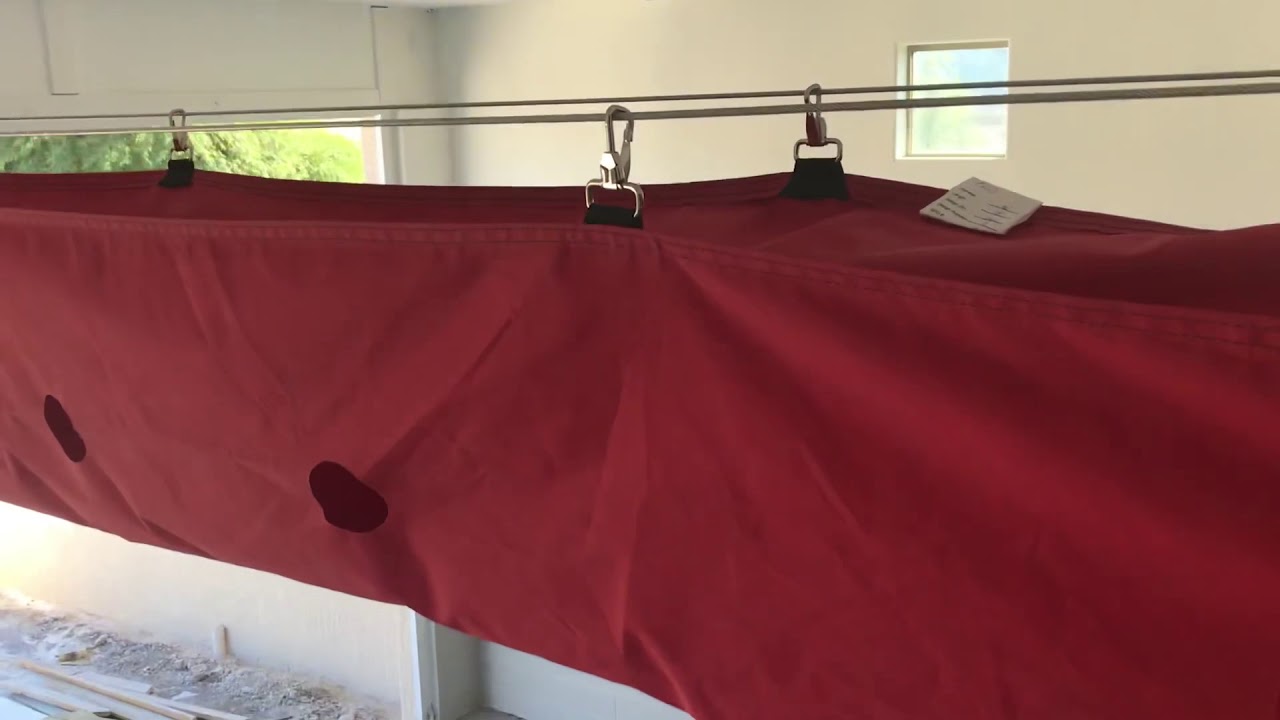Fabric ductwork is revolutionizing the way we think about heating, ventilation, and air conditioning systems. This innovative solution combines the benefits of traditional metal ductwork with the flexibility and efficiency of fabric materials. With its lightweight construction and versatile design, fabric ductwork offers an array of advantages that are sure to capture your interest.
Firstly, the flexibility of fabric ductwork allows for easy customization to meet the specific needs of any space. Whether it’s a large industrial facility or a small office, fabric ductwork can be tailored to fit perfectly, ensuring optimal airflow and comfort. Additionally, its lightweight nature makes installation a breeze, reducing time and labor costs.
Moreover, fabric ductwork offers superior air distribution compared to traditional systems. Thanks to its permeable fabric surface, it evenly distributes air throughout the space, eliminating temperature stratification and reducing hot and cold spots. This not only enhances comfort but also leads to significant energy savings, as it eliminates the need for excessive heating or cooling.
Furthermore, fabric ductwork is highly durable and easy to maintain. The fabric used is specially engineered to withstand the rigors of daily use, such as dust, dirt, and moisture. It can be easily cleaned, reducing the risk of mold and improving indoor air quality.
In summary, fabric ductwork is a game-changer in the HVAC industry, offering a versatile, efficient, and durable solution for air distribution. Its flexibility, superior air distribution, and ease of maintenance make it a compelling choice for any space. Upgrade to fabric ductwork today and experience the future of HVAC systems!

The Advantages of Fabric Ductwork
Fabric ductwork is a modern solution for HVAC systems that offers numerous advantages over traditional metal ductwork. With its flexibility, energy efficiency, and customizable design, fabric ductwork is becoming increasingly popular in commercial and industrial settings. In this article, we will explore the benefits of fabric ductwork and why it is a worthy investment.
1. Improved Air Distribution
Fabric ductwork is designed to deliver even air distribution throughout a space. The permeable fabric material allows air to be released evenly along the entire length of the duct, resulting in better airflow and temperature consistency. Unlike traditional metal ducts that produce concentrated streams of air, fabric ductwork eliminates drafts, hotspots, and temperature variations, providing occupants with more comfortable and productive environments.
Additionally, fabric ducts can be customized with various air dispersion patterns, such as linear, radial, or targeted, to meet the specific needs of different spaces. This flexibility ensures efficient air distribution, preventing stagnant air zones and optimizing the overall performance of the HVAC system.
2. Energy Efficiency
One of the key advantages of fabric ductwork is its superior energy efficiency compared to metal ducts. The fabric material used in these ducts has low thermal conductivity, meaning that less heat is transferred between the air inside the duct and the surrounding environment. As a result, fabric ductwork minimizes thermal losses and reduces the energy required to heat or cool the air.
Furthermore, fabric ducts are lightweight and have a reduced air pressure drop, which means that the HVAC system doesn’t have to work as hard to push air through the ductwork. This translates into lower energy consumption, reduced operating costs, and increased overall energy efficiency.
3. Easy Installation and Maintenance
Compared to traditional metal ductwork, fabric ductwork is much easier to install and maintain. The lightweight nature of fabric ducts makes them easier to transport and handle during installation. Unlike metal ducts that require welding or specialized tools, fabric ducts can be easily cut, shaped, and attached using basic tools, significantly reducing installation time and costs.
Moreover, fabric ductwork is washable and resistant to mold and bacteria growth. Cleaning fabric ducts is a straightforward process that can be done using a pressure washer or a washing machine, ensuring optimal air quality and preventing the accumulation of dust and allergens. The ability to clean fabric ducts also extends their lifespan, resulting in long-term cost savings.
4. Aesthetically Pleasing
Fabric ductwork offers a sleek and modern appearance that can enhance the aesthetics of any space. The fabric material can be customized in terms of color, pattern, and shape to seamlessly blend with the surrounding environment or to create a unique design feature. This flexibility allows fabric ductwork to be a visually appealing alternative to traditional metal ducts, especially in areas where the HVAC system is exposed.
In addition to its visual appeal, fabric ductwork is also quieter than metal ducts. The fabric material absorbs sound waves, reducing noise levels and creating a more comfortable and peaceful environment for occupants.
5. Sustainability
Fabric ductwork is a sustainable choice for HVAC systems. The fabric material used in these ducts is typically made from recycled or recyclable materials, reducing the environmental impact. Furthermore, fabric ductwork contributes to energy savings due to its superior thermal performance and reduced air pressure drop, resulting in lower carbon emissions and a smaller ecological footprint.
Additionally, fabric ductwork can be easily disassembled and reused in different spaces or projects, minimizing waste and promoting a circular economy. Its durability and washability also contribute to a longer lifespan, reducing the need for frequent replacements and further reducing waste.
In conclusion, fabric ductwork offers numerous advantages over traditional metal ductwork. Its improved air distribution, energy efficiency, easy installation and maintenance, aesthetic appeal, and sustainability make it an excellent choice for commercial and industrial HVAC systems. With its ability to create comfortable and productive environments while reducing energy consumption and environmental impact, fabric ductwork is revolutionizing the way we design and operate HVAC systems.
Ducting Innovation: Revolutionizing Air Distribution
Video Source : John Carpentieri
Fabric Ductwork
Fabric Ductwork Overview
Fabric ductwork, also known as textile air dispersion systems, is a highly efficient and innovative solution for HVAC (Heating, Ventilation, and Air Conditioning) installations. It provides a number of benefits over traditional metal ductwork, making it a preferred choice for various commercial and industrial applications.
| Advantages of Fabric Ductwork | Features |
|---|---|
| Improved Air Distribution | Fabric ductwork ensures uniform air distribution due to its permeable material, eliminating hot and cold spots within the space. The fabric’s microperforations allow for precise air dispersion, resulting in optimal air quality and comfort for occupants. |
| Energy Efficiency | Compared to metal ducts, fabric ductwork minimizes pressure losses due to its low resistance, resulting in reduced energy consumption. It allows for better airflow control, optimizing the performance of HVAC systems and reducing operational costs. |
| Customizable Design | Fabric ductwork offers a wide range of design options, allowing architects and engineers to seamlessly integrate it into various architectural styles. It can be tailored to fit specific space requirements, including curved or irregular layouts, ensuring a visually appealing and functional installation. |
| Easy Installation and Maintenance | Installing fabric ductwork is a straightforward process, often requiring fewer labor hours compared to traditional ductwork systems. Its lightweight construction and flexible nature make it easy to handle and adjust during installation. Furthermore, fabric ductwork is washable, reducing the need for costly maintenance and ensuring long-lasting performance. |
| Aesthetics | With a variety of fabric types, colors, and patterns available, fabric ductwork can be customized to enhance the visual appeal of any space. It can seamlessly blend into the surroundings, providing a clean and modern look that complements the overall design. |
Overall, fabric ductwork offers a range of advantages that make it an excellent choice for HVAC systems in various applications, including commercial buildings, industrial facilities, sports arenas, and educational institutions. Its efficient air distribution, energy savings, customizable design, ease of installation and maintenance, and aesthetic appeal make it a compelling solution for achieving optimal indoor air quality and comfort.

